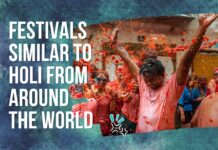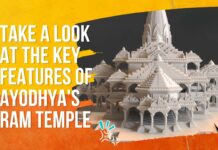India is a land of festivals and celebration. In every nook and corner of the country, people are rejoicing and celebrating a festival or two.
This July, one of the most well-known festivals, called ‘Behdienkhlam’ is celebrated in the small town of Jowai, in Meghalaya.
The Hills are Alive with Spirits and Sprites
The Northeastern state of Meghalaya comprises of three states- Khasi Hills, Jaintia Hills and Garo Hills.
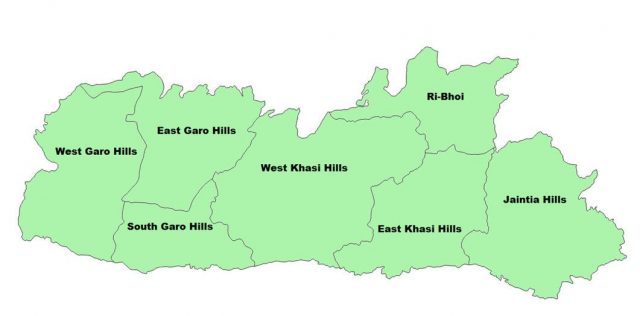
According to folktales, Jowai town in Jaintia Hills, which is 60 kilometers from Shillong, was once covered by thick forests, without any human habitation. It was home to five deities, four stones, and a river nymph.
Read Also: The Puri Or Jagannath Rath Yatra: We Demystified It
The Festival of Behdienkhlam
The word Behdienkhlam literally means, “to chase away plague” and is derived from an ancient story of how the region was threatened by a plague.
Scared by this prediction, the “Pnars” travelled to the shrines of their deities who advised them to worship the divine elements in the form of the festival of “Behdienkhlam”.
Today, the festival is celebrated by the non-Christians or the “Niam Tre” and is also celebrated as a prayer seeking divine blessings for a rich harvest in the year ahead.
Elaborate Rituals
The festival occurs within a span of four days with a series of rituals that are followed.
A week before the festival, a pig is sacrificed to “thunder” (Knia Pyrthat) to ward off all evil.

Following this is the most popular ritual of the festival where young men, led by priests, beat the roof of every house with bamboo poles accompanied by the beating of drums, cymbals, and chants as a symbol of the flight of evil spirits.
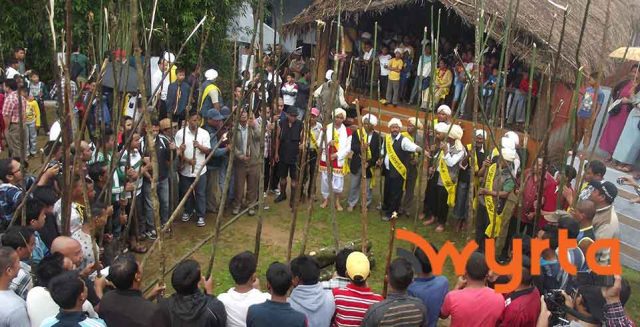
The climax of the festival takes place on the last day when young men fight for the possession of a huge, polished tree trunk called “dieng khlam” or “khnong”, and smear mud on each other in a sacred place called “Aitnar”.
While all this is going on, various well-designed towers called “rots”, which are made of bamboo, make their way into the “Aitnar”. Everything happens simultaneously and there is a colourful explosion of colours.
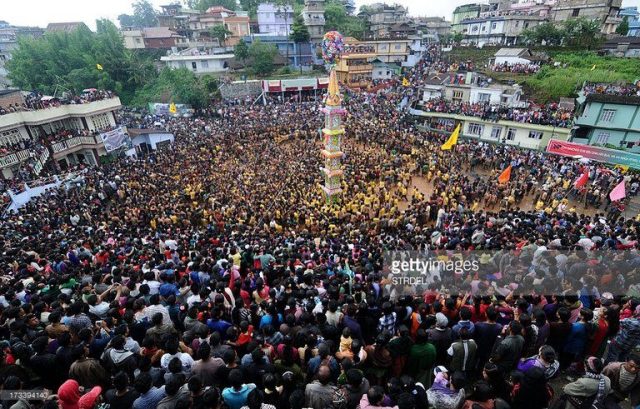
Besides, the festival also addresses environmental and societal issues which are highlighted in the messages incorporated into the “rots”.
The “Khnong”, along with the rots are then immersed in the muddy waters of the “Aitnar”.

The festival concludes with a ceremony called the “Dad-lawakor”, which is a game similar to football. Men jostle for the possession of a wooden ball to signify which region would receive more harvest for that particular year.
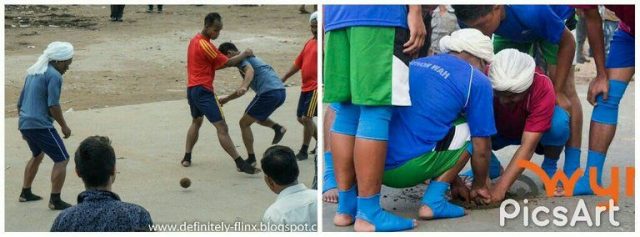
While the men are busy with the various outdoor activities, the women take care of the household. They are preoccupied with various rituals in the form of offerings to the gods and home-brewed rice beer for the men at the end of the festival.
They also take this opportunity to adorn themselves with the most elaborate attires accompanied by gold jewellery from head to toe (literally).

India and the Medley of Cultures
The Behdienkhlam festival is similar to the Hindu festivals of Holi in its vibrant and colourful nature, and the festival of Puja that spans for many days and involves the immersion of the gods in rivers.
India is unique for the fact that it harbours many cultures and religions, each is different in its own way. In such a vibrant country as India, cultural practices are an important means of identification for each section of people. However, although each culture is different from the other, they all co-exist in perfect harmony to make our country what it is today.
Image Credits: Wyrta, Google Images
You May Also Like:
http://edtimes.in/2017/07/this-genius-indian-filmmaker-is-making-better-films-than-even-batman-inception/




























